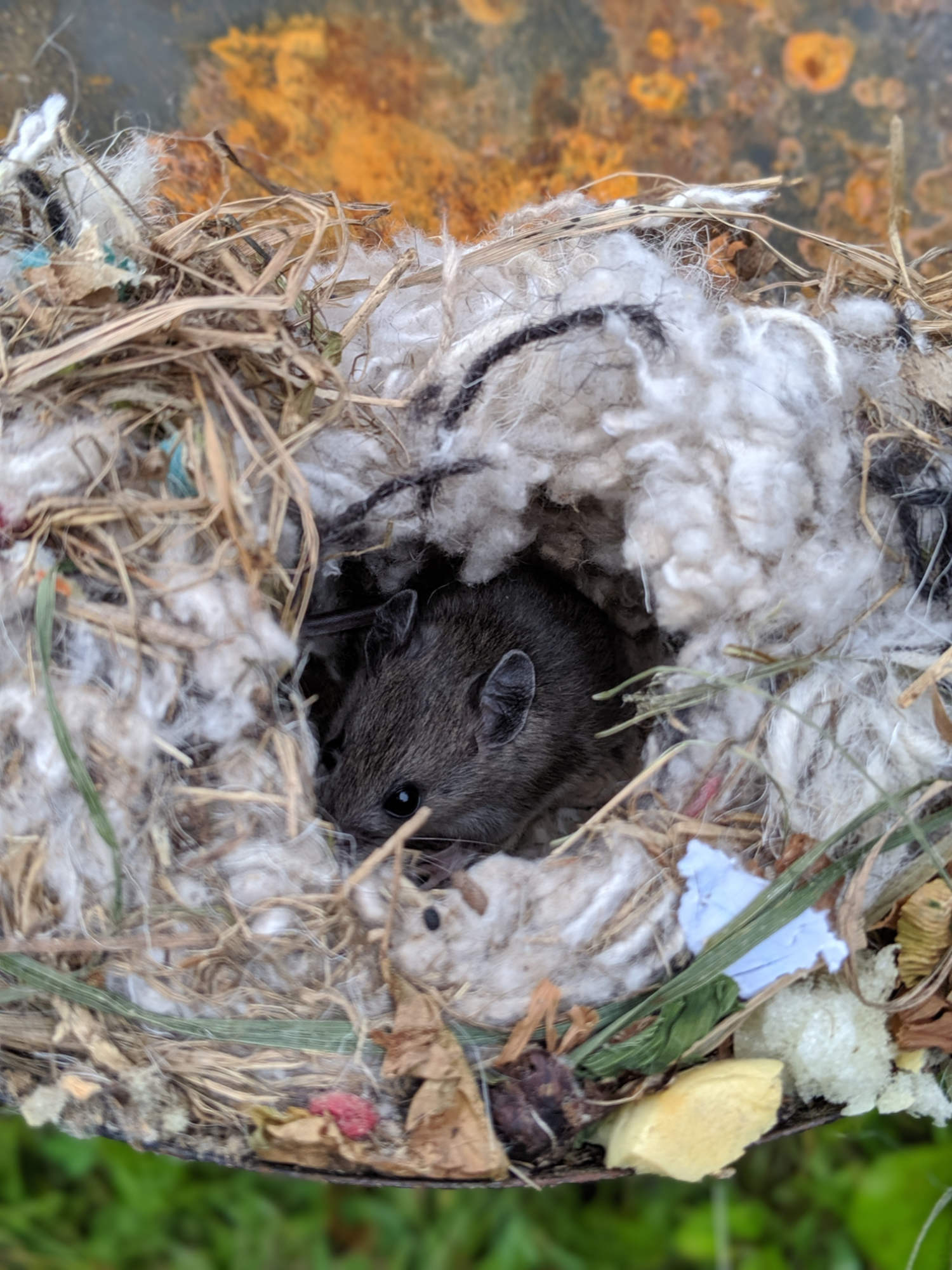Take Precautions When Cleaning Up Mouse Nest Sites
By Chris Williams on November 13, 2015.
 Occasionally we are called out to a house where there has been a heavy mouse infestation with lots of mouse poop and urine throughout. Often the resident has been trying to clean up the mouse evidence without knowing that they should be taking precautions. Persons cleaning up garage, sheds, outbuildings, or any site where rodent droppings may have accumulated over years have a higher risk of acquiring a disease from those droppings.
Occasionally we are called out to a house where there has been a heavy mouse infestation with lots of mouse poop and urine throughout. Often the resident has been trying to clean up the mouse evidence without knowing that they should be taking precautions. Persons cleaning up garage, sheds, outbuildings, or any site where rodent droppings may have accumulated over years have a higher risk of acquiring a disease from those droppings.
Hantavirus Can Occur Even in the Northeast
The main concern when cleaning up rodent nest sites is inhaling airborne disease organisms in dusty areas. Hantavirus Pulmonary Syndrome (hantavirus) occurs in various areas of the U.S., spread by a different rodent in each region. The primary area for hantavirus cases is the Southwestern U.S., but here in the Northeast, a New York strain of hantavirus, although rare, can be spread by the white-footed mouse.
Humans are infected when they inhale dust that contains dried contaminated rodent urine or feces. Infection can also occur if feces or urine particles from an infected rodent get into a cut, or the eyes, nose, or mouth. Your risk of infection depends on the presence of infected mice, the amount of mouse droppings and nest material present, and the precautions you take during cleanup.
Guidelines When Cleaning Up Mouse Droppings
The Massachusetts Department of Public Health and the Centers for Disease Control (CDC) offer the following recommendations for those involved in cleaning rodent-contaminated areas:
1. Work in well-ventilated areas. Before starting the cleanup, open doors and windows and air out the site for at least 30 minutes. Leave the site during the airing-out period.
2. Wear rubber, latex, or vinyl gloves. In heavy infestations or in high risk areas, you and any others doing the work may also need to protect yourselves with a face mask or respirator, protective eyewear, and long-sleeved clothing.
3. Clean up droppings using a wet method rather than a dry method like sweeping or vacuuming that can stir up the droppings. Spraying the droppings first with a disinfectant such as diluted bleach will help keep disease organisms from becoming airborne.
4. Clean up dampened droppings and nest material with paper towels moistened with disinfectant. Discard all cleanup materials in a sealed plastic bag. Use a wet mop to clean the area after and disinfect any surfaces or items that may have been contaminated by rodent droppings or urine.
For a heavy rodent infestation or cleanup of infested outbuildings, you should contact your local health department for advice. Cleanup professionals with special protective equipment may be needed in certain high-risk situations.
Photo credit: Wikimedia Commons | James Lindsey at Ecology of Commanster